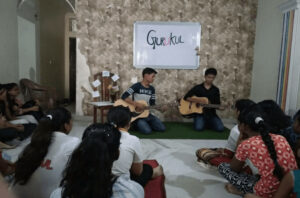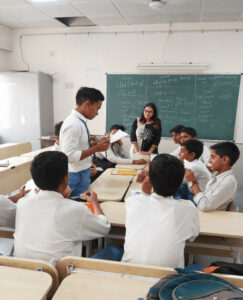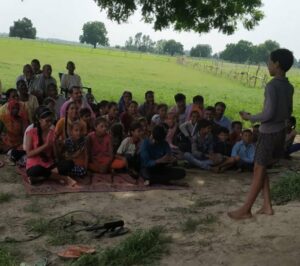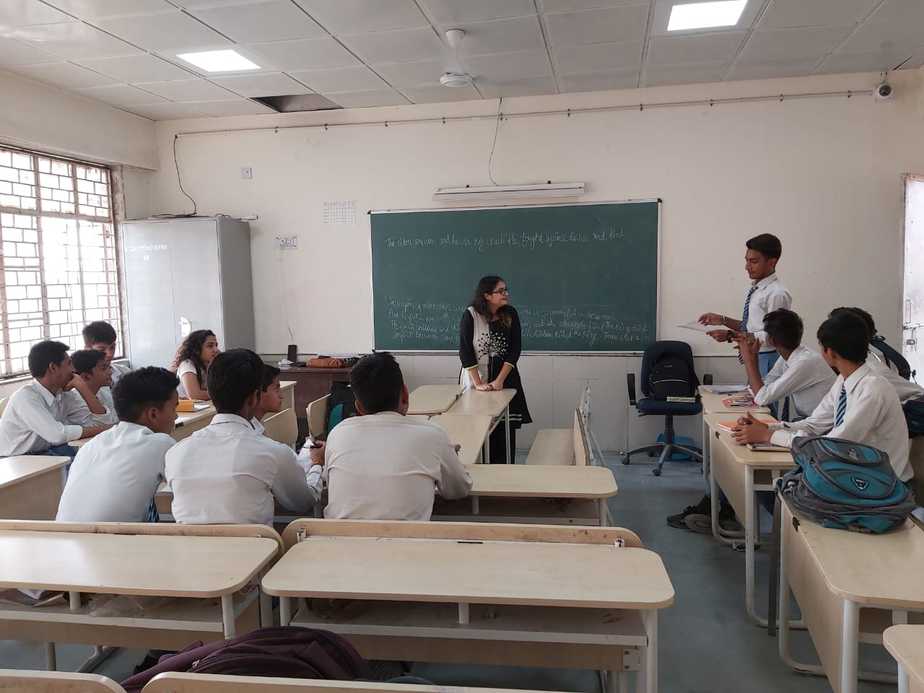Written by Ipsita Mishra
“I grew up with numbers and labels…
These numbers tell me where I stand, how much I learn, and how much I know.
But I wonder, are these numbers, that feel like advertisements interrupting my favourite movie,
really that significant?…”– 14-year old Supriya Kumari, a student of Rashtriya Pratibha Vikas Vidyalaya, Delhi, reciting her poem ‘Numbers’ , describes the need to define one beyond their marks, at the Spoken Fest in Mumbai in 2019.
Art allows people to tell stories and spark conversations, even if just on a piece of paper, in the rhythm of a song, or in the words of a poem. However, over the years, our education system has steadily tilted towards producing students in-line with productive economic units, thus pushing the emphasis on art and art-based education to the back seat. This is probably one of the reasons why India’s rank in the Global Creativity Index 2019 is 52 among 129 countries.
ALSO READ: Beyond the Books: Art Education in India
With the Indian education system coming under intense scrutiny for acting like a factory and churning out a good workforce, there has been a push towards creating more well-rounded students. The way to do this? Re-emphasizing art education. It is crucial to understand that learning core concepts in other subjects and the arts are not two mutually exclusive fields; art can be used as a medium to teach core subjects, while art forms themselves are extremely effective skill-building mechanisms.
Art education can be especially helpful for students from challenging economic and social backgrounds; these students often have the lowest learning outcomes, are more likely to drop out of school and lack life skills. From building interpersonal skills and confidence to simply finding an outlet, art and art-based learning can prove to be the difference-maker in actually providing quality education.
A Real and Personal Impact
“Poetry has helped me understand myself, create ideas, empathize with others and identify what motivates me to become a better person,” said Jyoti, a student of 11th grade in DPS, Faridabad. Jyoti, who earlier studied in a government school in Tughlakabad, has been learning, writing and performing poetry with Slam Out Loud — an organization working at the intersection of arts, education, and leadership — since the 7th grade. She believes that including art in the education system will bring a huge difference, as it did for her.
She has been running a project called Gurukul, where she helps teach different art forms to other students from low-income communities using the help of other artists. She has also planned to inculcate art as a tool in learning various other concepts. “I did not like Maths initially and there are so many other kids who don’t like the subject but I think if we teach Math equations through poetry or visual arts, that will engage us and develop an interest in it,” she says.

Art education also widens the scope of what is considered to be ‘education’. Abbas, a 10th grader who is currently studying at the Government Boys’ Senior Secondary School in Saket speaks about this, saying,
“Education for me is the freedom to raise my voice against the wrong and express my opinions and the current education system is just schooling us rather than educating.”
Abbas has been performing poetry, beat-boxing and rapping with Slam Out Loud since 2017. He says that it has helped him become more self-aware, politically aware and develop critical thinking and questioning skills. Abbas, who didn’t take much interest at school before, has been finding a connect to his subjects now, for which he credits the arts.

Through conversations with Jyoti, Abbas and other students, a couple of things stood out. First, a few years ago, these students were not able to express their thoughts clearly, with underconfidence being a major undercurrent due to their social and economic standing. Second, it is through art, in its various forms, that they found some comfort and harnessed its power to interact with the world around them, especially in the field of education; students, who otherwise face barriers to their education in various forms, now could realize their right to education with significant effect.
Reforming the System
There is a broad understanding of the good that can come of giving art an important space in the education system; the NCERT has been a vocal advocate for the same and has developed things like flexible syllabi and teacher handbooks, while the CBSE decided to integrate art into pedagogical processes from this academic year, 2019-20. However, it is important to acknowledge that these are just small steps in an otherwise long journey of providing quality, accessible education.
Take for instance the fact that the average Art teacher-student ratio in India is 1:1400 (according to an RTI filed by Slam Out Loud), leaving children with less than 20 hours of art education every year. In such an atmosphere, how does one ensure the accessibility of the same? This has always been a tough cookie to crack, but one possible way would be to team up with organizations in the art education space to bridge the gap.
Slam Out Loud, for instance, provides access to artistic opportunities and art-based learning to children from communities who face socio-economic, physical or emotional barriers to exploring art. The Delhi-based organisation uses various art forms to help children of government and low-income private schools aged 10-17 find their voice and build confidence, creativity, collaboration, critical thinking, communication, self-esteem and empathy. Making use of such organizations, especially in the country’s rural parts, can be the key to breaking away from current stereotypes about our education system; schools prefer rote memorization over critical thinking and problem-solving skills.

Jyoti says, “education is not just learning but implementing those learnings in real life to identify and solve problems…education is for all and we need to think about what and how we want to learn…all the stakeholders need to re-imagine education together.”
With persistent efforts like our education bodies are beginning to make, effective implementation from state governments and extensive awareness programmes about the importance of art education, the hope for a major social and educational transformation is every bit possible.






